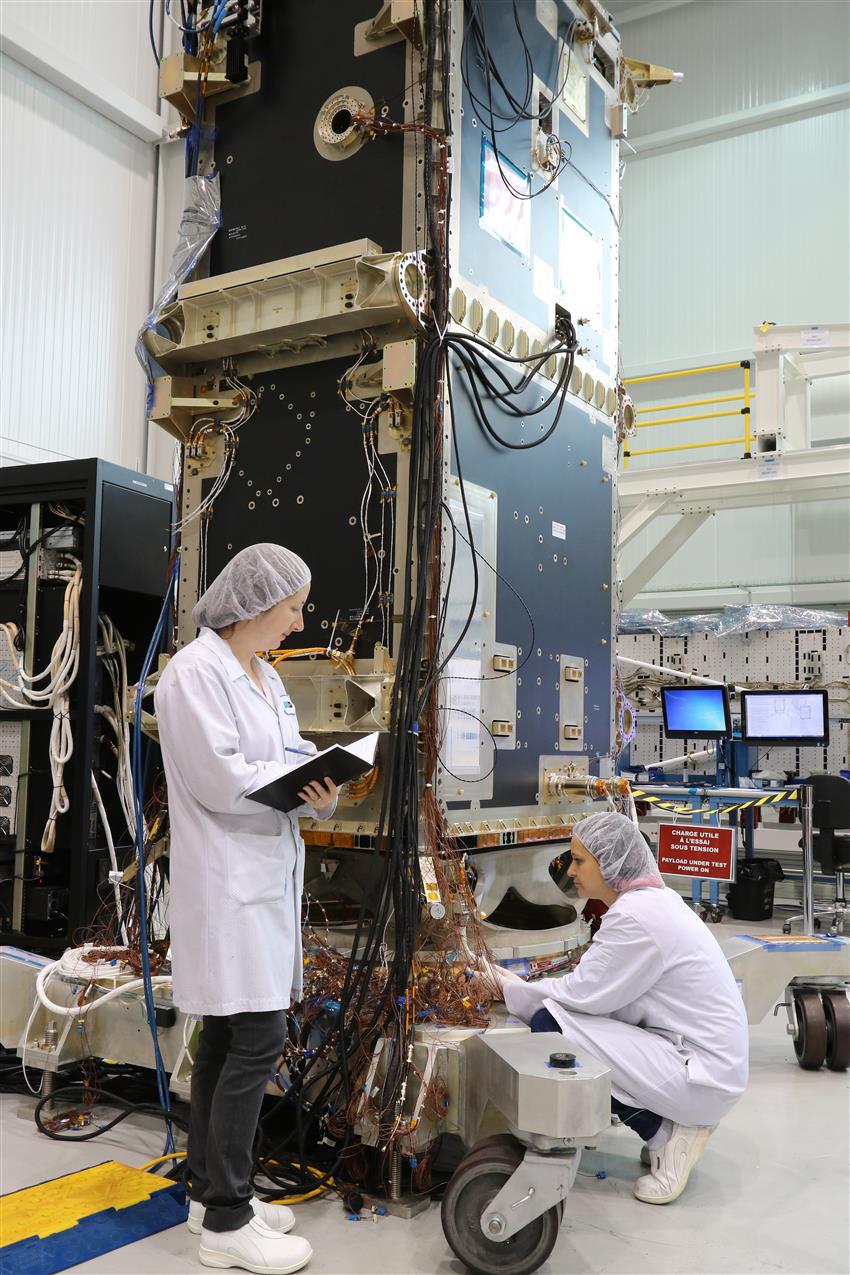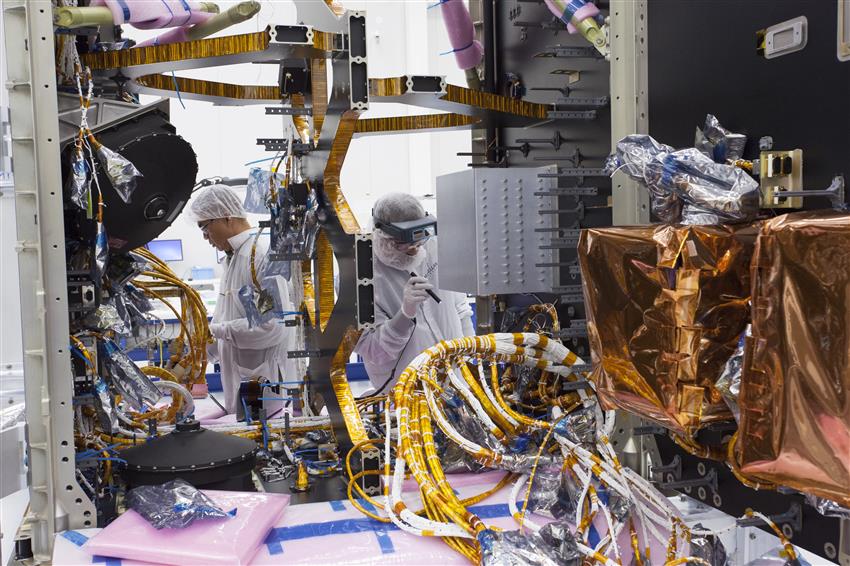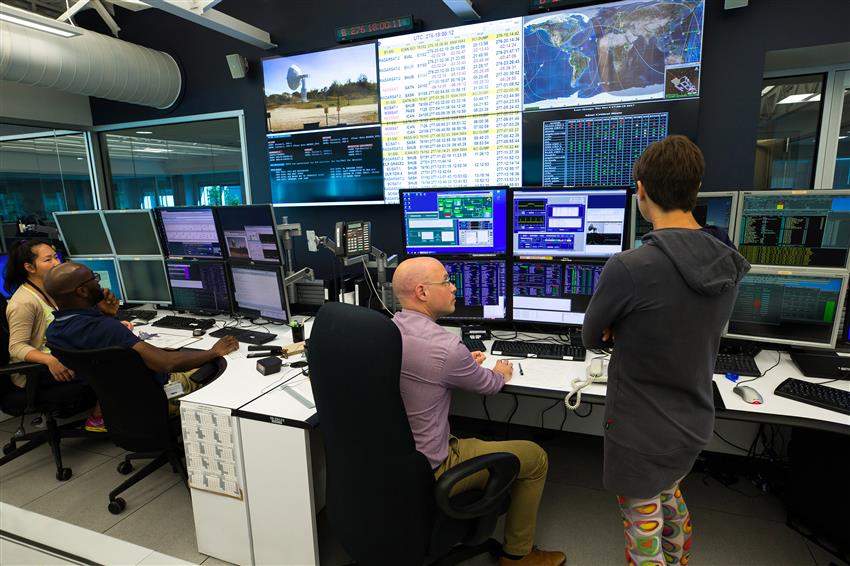Mission milestones
Current status: Regular operations
After the three RADARSAT Constellation Mission (RCM) satellites became operational in , data acquisition started, and the federal government departments are beginning to use RCM data to support programs and services to Canadians. Also, certain RCM image products are now available to the general public through the Earth Observation Data Management System. Designed and supported by Natural Resources Canada, the system gives access to authoritative Earth observation data to Canadian and international industry and the general public.
The Satellite Operations Control Centre, located at Canadian Space Agency (CSA) headquarters in Longueuil, Quebec; the Back-up Control Facility in Ottawa; as well as satellite control and data reception antennas in different regions of the country, are supporting operations of the constellation.
Summer-fall : Commissioning
During the commissioning period, the RCM satellites were tested to ensure they were functioning according to the design objectives and specifications.
: Launch
The RADARSAT Constellation satellites were launched aboard a SpaceX Falcon 9 rocket from Vandenberg Air Force Base, California, on , 2019. The three spacecraft were put into orbit using a single launcher configuration. A special instrument was designed by a company in Sweden to deploy each satellite.
This animation shows the launch, deployment and operation of the RCM satellites. (Credits: CSA and MDA, a Maxar company)
to : Delivery to California
On , the last of the three RCM spacecraft was transported to California in preparation for launch. The previous two spacecraft were delivered in and .
to : Extensive testing
Each of the three RCM spacecraft passed a series of critical tests in preparation for the intense experience of a rocket launch and the extreme space environment. The tests included:
TVAC testing
The Thermal Vacuum Chamber (TVAC) test is used to check the satellite's resistance to extreme space temperatures and vacuum. TVAC testing of each spacecraft was completed at the CSA's David Florida Laboratory.
This timelapse shows one of the RCM satellites on its way to the Thermal Vacuum Chamber at the David Florida Laboratory. (Credit: CSA)
Did you know?
The RCM satellites made a total of 14 trips between the Montreal area (MDA facilities) and Ottawa for testing (at either the CSA's David Florida Laboratory or the National Research Council Canada).
SAR panel deployment test
- The synthetic aperture radar (SAR) antenna is the main instrument on each of the RCM satellites. It will emit the radar signal to Earth's surface and receive back its echo to generate valuable data. This test, designed to make sure that the SAR panel deploys properly once in orbit, is one of the few tests where components of the satellite move. Since the satellites are designed to operate in space, it can be tricky to have them move under the force of gravity on Earth. To overcome that issue, the Super Gantry Crane was custom designed by a team of engineers at MDA to hold the satellite's two SAR panels and counterbalance their weight to mimic the microgravity environment of space. The test was completed at MDA's Montreal facility.
Learn more about how the satellites were tested by MDA in this Ask an Expert session on YouTube.
This video shows an important test that is done to ensure that the panels of the SAR antenna (the part of the satellite that will capture valuable data of Earth) will deploy properly once in orbit. (Credit: CSA)
to : Ground segment
All ground segment elements were manufactured, tested and delivered. As well, ground segment operator training was conducted, and operations documentation was written.
to : Manufacturing and integration
As the prime contractor for the project, MDA, a Maxar company, was responsible for the design, construction and testing of the satellites, which was mainly done out of their facility near Montreal. Magellan, based in Winnipeg, built the bus – i.e. the body – of the three satellites. At the peak of the project, approximately 300 people worked on the construction of the RCM in some 50 companies across the country. In total, 125 suppliers across 7 Canadian provinces played a role in the project.
The Making of a Satellite – The RADARSAT Constellation. This animation presents the key components of the RCM spacecraft. (Credits: CSA and MDA, a Maxar company)
Photos of RCM manufacturing and integration

MDA system engineer and assembler examining one of the RCM spacecraft at MDA in Sainte-Anne-de-Bellevue. (Credit: CSA)

Engineers inspect the second of three RCM satellite buses in the Magellan facility. Batteries are visible in the foreground, wrapped in thermal blankets. A reaction wheel is on the left. (Credit: Magellan Aerospace Limited)

RCM pre-flight model bus in preparation for modal testing at Magellan Aerospace. (Credit: Magellan Aerospace Limited)
to : Detailed definition
The final design was approved. Certain components were produced. Preliminary design of the ground segment elements was initiated. The Mission Critical Design Review was accepted by the RCM stakeholders.
to : Preliminary definition
The design concept was refined and the preliminary design of the satellites completed. The CSA continued consultations with other Canadian government departments that have a vested interest in this space mission, to ensure that the design effectively responds to their requirements.
The RCM team also closely followed the ever-evolving developments in the international remote sensing community to identify potential synergies, recognizing that the mission could serve global initiatives that rely on data from advanced Earth observation satellites.
: Launch of RADARSAT-2
Much was learned after the launch of RADARSAT-2 about the information that can be derived from radar imagery from satellites and how important it is to a variety of departments in Canada. This had an impact on the design concept of the RCM, which was later refined.
to : Requirements definition
The system requirements were defined. Top-level concept designs were produced, and the preliminary cost and schedule were established. The User Requirements were confirmed. This permitted the development of the Mission Requirements document and the definition of the overall mission concept to meet the user needs, and to produce the requirements for the system and subsystems.
: Planning
The RCM was presented to Cabinet for approval, marking the official start of the project.





